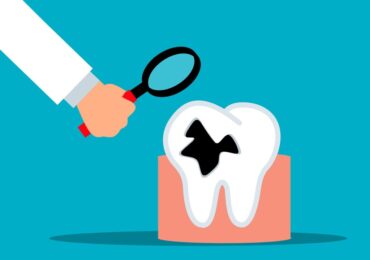Tooth decay, also known as dental caries or cavities, is one of the most common oral health problems worldwide. While many people think of it simply as “holes in the teeth,” the process behind tooth decay is far more complex. Understanding what really causes tooth decay is the first step in preventing it and maintaining a healthy, bright smile.

The Role of Bacteria in Tooth Decay
The primary culprit behind tooth decay is bacteria. Our mouths are home to hundreds of different bacterial species, many of which are harmless. However, some bacteria, such as Streptococcus mutans, are particularly adept at causing decay. These bacteria feed on the sugars and carbohydrates in the foods we eat, producing acids as a byproduct.
When these acids come into contact with the tooth enamel—the hard, protective outer layer of our teeth—they begin to erode it. Over time, this erosion can lead to cavities, the hallmark of tooth decay. Without proper oral hygiene, these bacteria can thrive, increasing the risk of more severe dental issues.
Sugar and Carbohydrates: Fuel for Decay
It’s no secret that sugar is bad for teeth, but it’s not just candy and soda that are the problem. Any food or drink high in simple carbohydrates, such as bread, pasta, and even fruit juices, can contribute to tooth decay. The bacteria in our mouths metabolize these sugars and produce acids, which gradually wear down the enamel.
Frequent snacking or sipping on sugary drinks throughout the day keeps the acid levels high, giving the enamel little time to recover. This is why dentists often recommend limiting sugary snacks and maintaining a balanced diet that supports oral health.
Poor Oral Hygiene: Letting Bacteria Win
Even if you eat a balanced diet, poor oral hygiene can accelerate tooth decay. Failing to brush and floss regularly allows plaque—a sticky film of bacteria—to build up on the teeth. Plaque can harden into tartar, which is much harder to remove and can create an environment where decay spreads more easily.
Brushing at least twice a day, flossing daily, and using mouthwash can help remove plaque and prevent bacterial overgrowth. Regular dental check-ups are also crucial, as dentists can detect early signs of decay before they become more serious problems.
Dry Mouth: When Saliva Is in Short Supply
Saliva is a natural defender against tooth decay. It helps neutralize acids in the mouth, wash away food particles, and provide minerals that repair early enamel damage. A condition called dry mouth, or xerostomia, reduces saliva production and makes teeth more vulnerable to decay.
Dry mouth can result from dehydration, certain medications, or medical conditions such as diabetes. If you struggle with a dry mouth, staying hydrated, chewing sugar-free gum, or using saliva substitutes can help protect your teeth.
Genetics and Tooth Structure
Believe it or not, genetics can also play a role in tooth decay. Some people naturally have stronger enamel or more saliva production, giving them an advantage against cavities. Others may have deeper grooves in their teeth, which can trap food and bacteria, increasing their risk of decay.
While we cannot change our genetics, awareness of these risk factors can help individuals take extra precautions, such as more frequent dental cleanings or protective dental sealants.
Lifestyle Factors That Contribute to Decay
Other lifestyle factors can increase the likelihood of tooth decay. Smoking and excessive alcohol consumption, for example, can weaken the mouth’s defenses, making teeth more susceptible to cavities. Stress can also contribute indirectly, as it may affect oral hygiene habits or lead to bruxism (teeth grinding), which can wear down enamel and expose teeth to decay.
Prevention Is Key
Although tooth decay can result from several factors, the encouraging news is that it is largely preventable. Reducing sugary foods, practicing consistent oral hygiene, staying properly hydrated, and scheduling regular dental check-ups are all key strategies. Using fluoride toothpaste and exploring dental sealants can offer additional protection, especially for those more prone to cavities.
Understanding the real causes of tooth decay—ranging from bacterial activity to diet and oral care habits—empowers you to take proactive steps in maintaining a healthy smile. And if tooth decay or other dental issues lead to tooth loss, it’s worth considering options like dental implants. In Schererville, dental implants cost can vary depending on the procedure and individual needs, but they provide a durable, long-term solution to restore both function and aesthetics. Ultimately, prevention is always the best approach, but knowing your treatment options ensures your oral health stays in top shape.